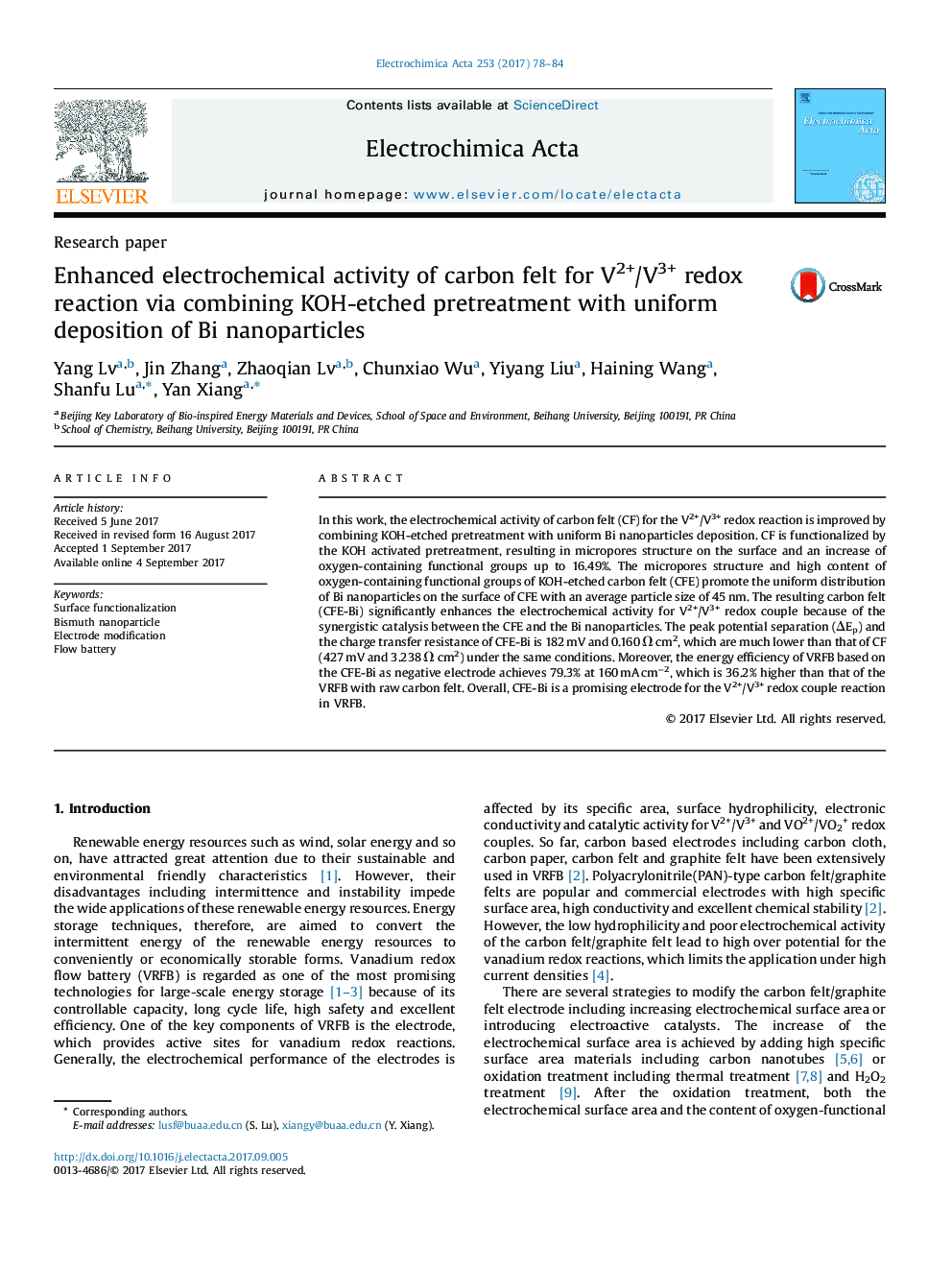| Article ID | Journal | Published Year | Pages | File Type |
|---|---|---|---|---|
| 6470046 | Electrochimica Acta | 2017 | 7 Pages |
â¢Bi nanoparticles are uniformly deposited on KOH-etched carbon felts.â¢KOH-etched carbon felts and Bi nanoparticles co-catalyze V2+/V3+ redox reaction.â¢Single cell tests demonstrate CFE-Bi as a promising electrode in VRFB.
In this work, the electrochemical activity of carbon felt (CF) for the V2+/V3+ redox reaction is improved by combining KOH-etched pretreatment with uniform Bi nanoparticles deposition. CF is functionalized by the KOH activated pretreatment, resulting in micropores structure on the surface and an increase of oxygen-containing functional groups up to 16.49%. The micropores structure and high content of oxygen-containing functional groups of KOH-etched carbon felt (CFE) promote the uniform distribution of Bi nanoparticles on the surface of CFE with an average particle size of 45 nm. The resulting carbon felt (CFE-Bi) significantly enhances the electrochemical activity for V2+/V3+ redox couple because of the synergistic catalysis between the CFE and the Bi nanoparticles. The peak potential separation (ÎEp) and the charge transfer resistance of CFE-Bi is 182 mV and 0.160 Ω cm2, which are much lower than that of CF (427 mV and 3.238 Ω cm2) under the same conditions. Moreover, the energy efficiency of VRFB based on the CFE-Bi as negative electrode achieves 79.3% at 160 mA cmâ2, which is 36.2% higher than that of the VRFB with raw carbon felt. Overall, CFE-Bi is a promising electrode for the V2+/V3+ redox couple reaction in VRFB.
Graphical abstractDownload high-res image (117KB)Download full-size image
